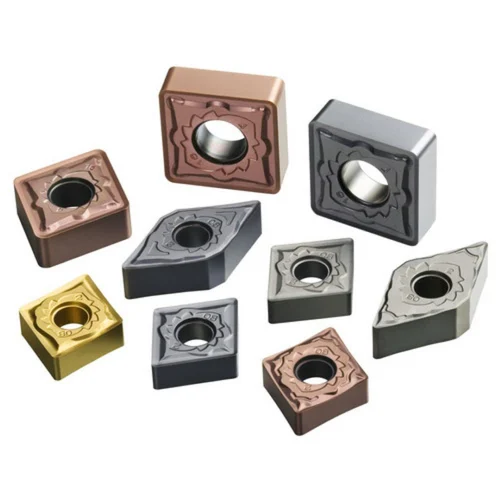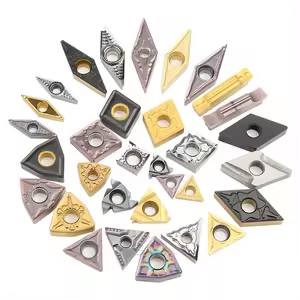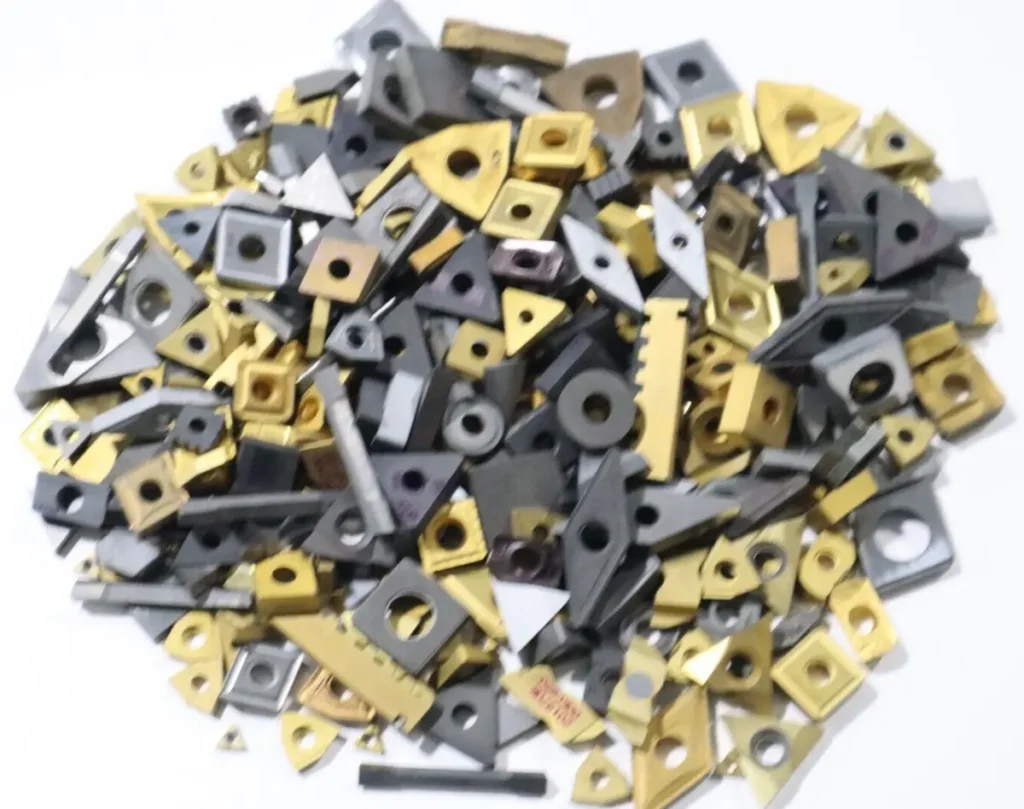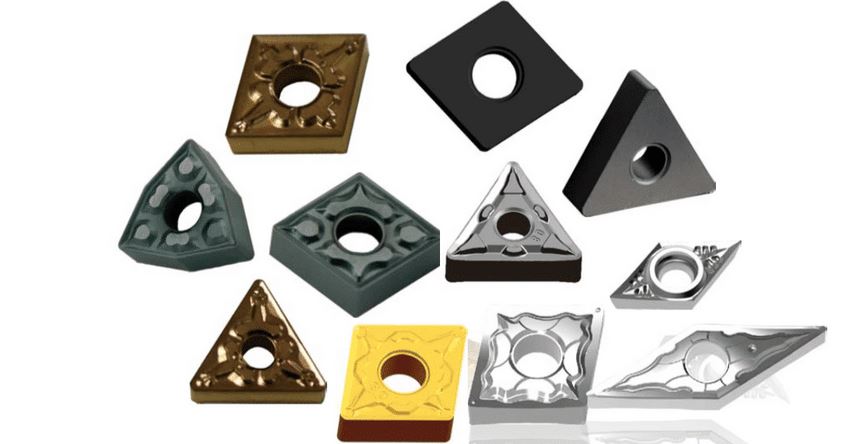Lorsqu'il s'agit de couper et de façonner des matériaux durs, les plaquettes en carbure sont les championnes de l'industrie. Mais qu'est-ce qui fait que Plaquettes en carbure de Chine si spécial ? Comment choisir la bonne ? Plongeons dans ce guide complet qui présente tout ce que vous devez savoir sur les plaquettes en carbure de Chine. Des types et applications aux propriétés des matériaux et aux détails des fournisseurs, nous avons tout ce qu'il vous faut.
Aperçu des plaquettes en carbure de Chine
La Chine est devenue l'un des principaux producteurs de plaquettes en carbure, réputées pour leur haute qualité et leurs prix compétitifs. Ces plaquettes sont essentielles dans les processus d'usinage pour couper, façonner et percer divers matériaux, notamment les métaux, les plastiques et le bois. Elles offrent une dureté, une résistance à l'usure et une résistance à la chaleur supérieures, ce qui les rend indispensables dans des secteurs allant de l'automobile à l'aérospatiale.
Types de plaquettes en carbure de Chine
Pour s'y retrouver dans la grande variété de plaquettes en carbure disponibles, il est essentiel de comprendre les différents types et leurs utilisations spécifiques. Voici un tableau pratique pour vous aider à démarrer :
| Type d'insertion | Description | Applications |
|---|---|---|
| Plaquettes de tournage | Conçu pour les opérations générales de tournage. Comprend des formes telles que CNMG, DNMG, TNMG. | Opérations de tournage sur les métaux. |
| Plaquettes de fraisage | Utilisé dans les fraiseuses pour créer des rainures, des fentes et d'autres formes. | Opérations de fraisage, rainurage. |
| Plaquettes de forage | Spécialement conçu pour percer des trous avec une grande précision. | Opérations de forage et d'alésage. |
| Plaquettes de rainurage | Conçu pour créer des rainures et des coupes sur les surfaces. | Opérations de rainurage, tronçonnage. |
| Inserts de filetage | Utilisé pour créer des filetages intérieurs et extérieurs avec précision. | Le filetage dans les processus d'usinage. |
| Plaquettes de séparation | Conçu pour le tronçonnage ou la découpe de pièces. | Opérations de séparation. |
| Inserts brasés | Plaquettes brasées sur un porte-outil pour des applications spécifiques. | Diverses opérations d'usinage. |
| Plaquettes indexables | Peut être tourné et indexé pour utiliser plusieurs arêtes de coupe. | Utilisation polyvalente dans de multiples opérations. |
| Inserts revêtus | Ils sont dotés d'un revêtement qui améliore les performances et la longévité. | Usinage à grande vitesse, résistance accrue à l'usure. |
| Inserts non revêtus | Plaquettes en carbure pur sans revêtement, idéales pour les matériaux plus tendres. | Usinage à usage général. |

Applications de la Plaquettes en carbure de Chine
Les plaquettes en carbure de Chine sont utilisées dans une multitude d'industries. Voici comment les différents types de plaquettes sont utilisés dans divers domaines :
| L'industrie | Application | Type d'insertion |
|---|---|---|
| Automobile | Pièces de moteur, composants de transmission | Tournage, fraisage, perçage |
| Aérospatiale | Pièces d'avion, composants de trains d'atterrissage | Fraisage, tournage, rainurage |
| Médical | Instruments chirurgicaux, implants | Fraisage de précision, perçage |
| Pétrole et gaz | Matériel de forage, composants de pipelines | Filetage, tournage |
| Électronique | Cartes de circuits imprimés, boîtiers | Micro-fraisage, perçage de précision |
| La construction | Pièces de machines lourdes, composants structurels | Tournage, fraisage |
| Travail du bois | Outils de coupe, outils de façonnage | Plaquettes spéciales pour la coupe du bois |
| Travail des métaux | Pièces et outils métalliques divers | Tournage et fraisage polyvalents |
Propriétés des matériaux des plaquettes en carbure de Chine
Il est essentiel de comprendre les propriétés des matériaux des plaquettes en carbure pour choisir celle qui convient le mieux à vos besoins :
| Propriété | Description |
|---|---|
| Dureté | Extrêmement dur, généralement supérieur à 90 HRA. |
| Solidité | Haute ténacité pour résister aux chocs et aux contraintes mécaniques. |
| Résistance à l'usure | La résistance supérieure à l'usure garantit la longévité et des performances constantes. |
| Résistance à la chaleur | Peut résister à des températures élevées sans perdre de sa dureté ou de sa résistance. |
| Conductivité thermique | Une conductivité thermique efficace favorise la dissipation de la chaleur pendant l'usinage. |
| Stabilité chimique | Résistant à l'oxydation et à d'autres réactions chimiques. |
Composition, propriétés, caractéristiques
La composition et les propriétés des plaquettes en carbure jouent un rôle important dans leurs performances :
| Composition | Propriétés | Caractéristiques |
|---|---|---|
| Carbure de tungstène (WC) | Dureté élevée, résistance à l'usure | Idéal pour les applications générales. |
| Cobalt (Co) | Agit comme un liant pour le carbure de tungstène | Améliore la ténacité et la stabilité thermique. |
| Carbure de titane (TiC) | Ajoute de la dureté et de la résistance à l'usure | Améliore les performances de l'usinage à grande vitesse. |
| Carbure de tantale (TaC) | Améliore la ténacité et la dureté | Utilisé dans les applications lourdes. |
| Nickel (Ni) | Agit comme un liant supplémentaire | Améliore la résistance à la corrosion. |
| Carbure de chrome (CrC) | Ajoute de la résistance à l'usure et de la dureté | Convient aux applications à haute température. |






Dureté, solidité et résistance à l'usure
Voici une comparaison des différents types de plaquettes en carbure en termes de dureté, de solidité et de résistance à l'usure :
| Type d'insertion | Dureté (HRA) | Résistance (MPa) | Résistance à l'usure |
|---|---|---|---|
| Plaquettes de tournage | 92 | 3000 | Haut |
| Plaquettes de fraisage | 91 | 2800 | Moyen à élevé |
| Plaquettes de forage | 93 | 3100 | Très élevé |
| Plaquettes de rainurage | 90 | 2700 | Haut |
| Inserts de filetage | 92 | 2900 | Haut |
| Plaquettes de séparation | 91 | 2750 | Moyen à élevé |
| Inserts brasés | 89 | 2600 | Moyen |
| Plaquettes indexables | 92 | 3000 | Haut |
| Inserts revêtus | 94 | 3200 | Très élevé |
| Inserts non revêtus | 88 | 2500 | Moyen |
Spécifications, tailles, formes, normes
Les plaquettes en carbure sont disponibles dans une grande variété de spécifications, de tailles et de formes, et sont conformes aux normes internationales. Voici un aperçu détaillé :
| Spécifications | Taille (mm) | Forme | Standard |
|---|---|---|---|
| ISO P | 10-25 | Rond, carré, triangle, diamant | ISO 1832 |
| ISO M | 12-30 | Rond, carré, triangle, diamant | ISO 1832 |
| ISO K | 8-20 | Rond, carré, triangle, diamant | ISO 1832 |
| ANSI C | 9-22 | Rond, carré, triangle, diamant | ANSI B212.5 |
| ANSI M | 11-26 | Rond, carré, triangle, diamant | ANSI B212.5 |
| JIS B | 10-24 | Rond, carré, triangle, diamant | JIS B 4052 |
| DIN | 8-23 | Rond, carré, triangle, diamant | DIN 4987 |
Fournisseurs et détails des prix
Il est essentiel de choisir le bon fournisseur et de comprendre les prix pour prendre des décisions éclairées. Voici une comparaison :
| Fournisseur | Fourchette de prix (par encart) | Région | Classement de la qualité |
|---|---|---|---|
| Carbure cémenté de Zhuzhou | $2 – $15 | Chine | Haut |
| Sandvik Coromant | $10 – $50 | Mondial | Très élevé |
| Kennametal | $8 – $45 | Mondial | Très élevé |
| Sumitomo Electric | $9 – $40 | Mondial | Haut |
| ISCAR | $12 – $55 | Mondial | Très élevé |
| Matériaux Mitsubishi | $10 – $48 | Mondial | Haut |
| YG-1 | $7 – $35 | Corée du Sud | Haut |
| TaeguTec | $6 – $33 | Corée du Sud | Haut |
| Tungaloy | $11 – $52 | Mondial | Très élevé |
| Kyocera | $9 – $38 | Mondial | Haut |
Choisir le bon Plaquettes en carbure de Chine
Le choix d'une plaquette en carbure appropriée implique la prise en compte de plusieurs facteurs. Voici un guide pour vous aider à sélectionner la bonne plaquette :
| Facteur | Considérations |
|---|---|
| Matériau à usiner | Dureté, ténacité et type de matériau (par exemple, acier, aluminium, bois) |
| Opération d'usinage | Type d'opération (par exemple, tournage, fraisage, perçage) |
| Forme de l'insert | Dépend de la coupe et du parcours d'outil requis (par exemple, rond, carré, triangle). |
| Revêtement | Revêtu ou non revêtu en fonction du matériau et de la vitesse d'opération |
| Taille de l'insert | Taille de la plaquette par rapport au porte-outil et à la profondeur de coupe requise |
| Vitesse de rotation et d'avance | Détermine la qualité de la plaquette adaptée aux paramètres opérationnels. |
| Coût | Contraintes budgétaires par rapport à la performance et à la longévité de l'insert |
| Réputation du fournisseur | Fiabilité et assurance qualité fournies par le fournisseur |
Avantages et limites
Chaque type de plaquette en carbure a ses avantages et ses inconvénients. Comparons-les :
| Type | Avantages | Limites |
|---|---|---|
| Plaquettes de tournage | Polyvalent, adapté à diverses opérations de tournage | Peut s'user plus rapidement sur des matériaux extrêmement durs |
| Plaquettes de fraisage | Excellent pour créer des formes et des rainures précises | Peut être plus cher que les plaquettes de tournage |
| Plaquettes de forage | Haute précision, excellent pour les trous profonds | Peut nécessiter un équipement spécialisé |
| Plaquettes de rainurage | Idéal pour créer des rainures et des coupes précises | Limité à des opérations de rainurage spécifiques |
| Inserts de filetage | Création précise du fil, finition de haute qualité | Peut être complexe à utiliser pour les débutants |
| Plaquettes de séparation | Efficace pour le tronçonnage, réduit les déchets de matériaux | Limité aux opérations de séparation |
| Inserts brasés | Solide et durable, excellent pour les opérations à fortes contraintes | Pas aussi polyvalent que les plaquettes indexables |
| Plaquettes indexables | Plusieurs arêtes de coupe, rentables au fil du temps | Le coût initial peut être plus élevé, il faut des porte-outils compatibles. |
| Inserts revêtus | Résistance accrue à l'usure, idéale pour les opérations à grande vitesse | Le revêtement peut être endommagé s'il n'est pas utilisé correctement |
| Inserts non revêtus | Rentable pour une utilisation générale | Peut s'user plus rapidement sur des matériaux plus durs |

FAQ
Qu'est-ce qu'une plaquette en carbure de Chine ?
Les plaquettes en carbure produites en Chine, réputées pour leur haute qualité et leur rentabilité, sont utilisées dans divers processus d'usinage pour couper, façonner et percer des matériaux.
Comment choisir la bonne plaquette carbure ?
Tenez compte du matériau à usiner, du type d'opération, de la forme de la plaquette, du revêtement, de la taille, de la vitesse et de l'avance, du coût et de la réputation du fournisseur.
Quels sont les avantages des plaquettes revêtues par rapport aux plaquettes non revêtues ?
Les plaquettes revêtues offrent une meilleure résistance à l'usure et sont idéales pour les opérations à grande vitesse. Les plaquettes non revêtues sont rentables et conviennent à un usage général, mais peuvent s'user plus rapidement sur des matériaux plus durs.
Les plaquettes en carbure peuvent-elles être utilisées pour tous les matériaux ?
Les plaquettes en carbure sont polyvalentes et peuvent être utilisées pour une large gamme de matériaux, y compris les métaux, les plastiques et le bois. Toutefois, le type spécifique de plaquette doit être choisi en fonction de la dureté du matériau et de l'opération d'usinage souhaitée.
Quelle est la différence entre les plaquettes de tournage et de fraisage ?
Les plaquettes de tournage sont utilisées pour les opérations générales de tournage, tandis que les plaquettes de fraisage sont utilisées dans les fraiseuses pour créer des rainures, des fentes et d'autres formes. Chacune a une conception spécifique pour répondre à son opération respective.
En comprenant ces détails, vous pouvez prendre une décision éclairée lors de la sélection des plaquettes en carbure pour vos besoins d'usinage. Que vous travailliez dans l'automobile, l'aérospatiale ou toute autre industrie, la bonne plaquette en carbure peut faire toute la différence en termes de précision et d'efficacité.




